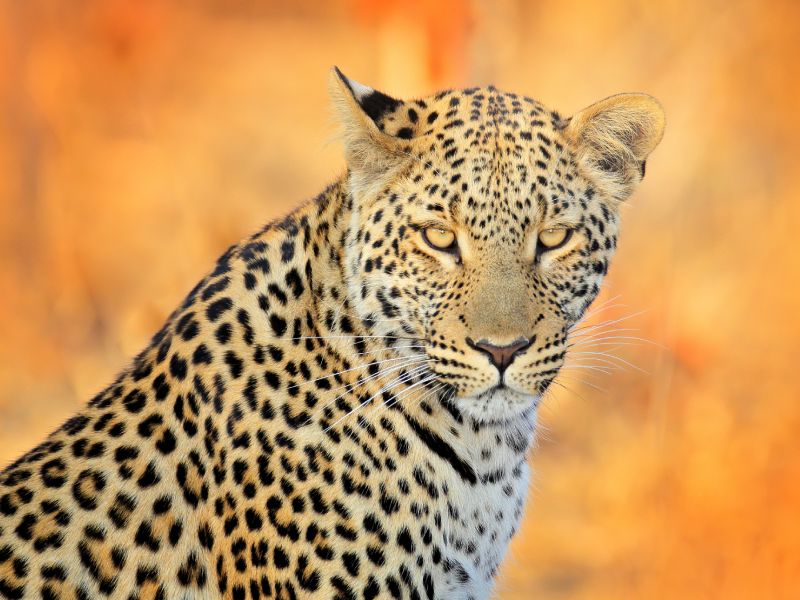
Scientific Name:
Shoulder Height Male:
Shoulder Height Female:
Average Male Weight:
Average Weight Female:
Mating Season:
The Leopard is the smallest of the Big Five, but don’t under-estimate this cat! He can be most dangerous when wounded and is probably the animal most likely to charge.
This feline is a shy, solitary, nocturnal animal, widely distributed across the African Continent.
The Leopard can live without water by extracting it from his prey however he will drink regularly if water is available. The mature “Tom” weighs between 120 and 180 pounds with individuals sometimes pushing the 200 mark. Females range from 70 to 130 pounds and generally appear more slender in stature.
Mature animals can consume about 20 percent of their body weight in a single feeding. They carry their prey up into the trees to protect it from the larger predators. It is amazing to watch them carry prey weighing easily as much as their own weight into the tree tops. They feed on virtually all meat sources including scavenged rotten meat. Impala is often considered their favorite meal.
This Cat is strongly territorial and a ruthless killer. The Leopard has exceptional eyesight and hearing. Give this member of the Big Five the utmost respect if you are forced to track a wounded cat into the bush; he is a master of stealth and camouflage and can come for you seemingly from nowhere. Life expectancy is about 12 to 15 years.
The Leopard is most often hunted on bait. An Impala hung on a conspicuous branch in good view from a blind makes an excellent ambush for “Old Spots”. Being primarily a nocturnal hunter, the Leopard will be extremely difficult to get in position for the shot, as in most African countries he must be taken during daylight hours. While he could be successfully taken with calibers as light as the .270 or 7mm, in most African countries the .375 remains the lawful minimum caliber. There remains controversy in regard to the weapon of choice for following up a wounded cat in the bush. While some seem to choose a shotgun with buckshot, many Professional hunters prefer a large caliber rifle, a Double if available. Be very cautious in your follow-up, as if allowed to get to you, this little cat can inflict serious injury. It has been said that for every second he is on you, 100 stitches will be required.
WhatsApp us